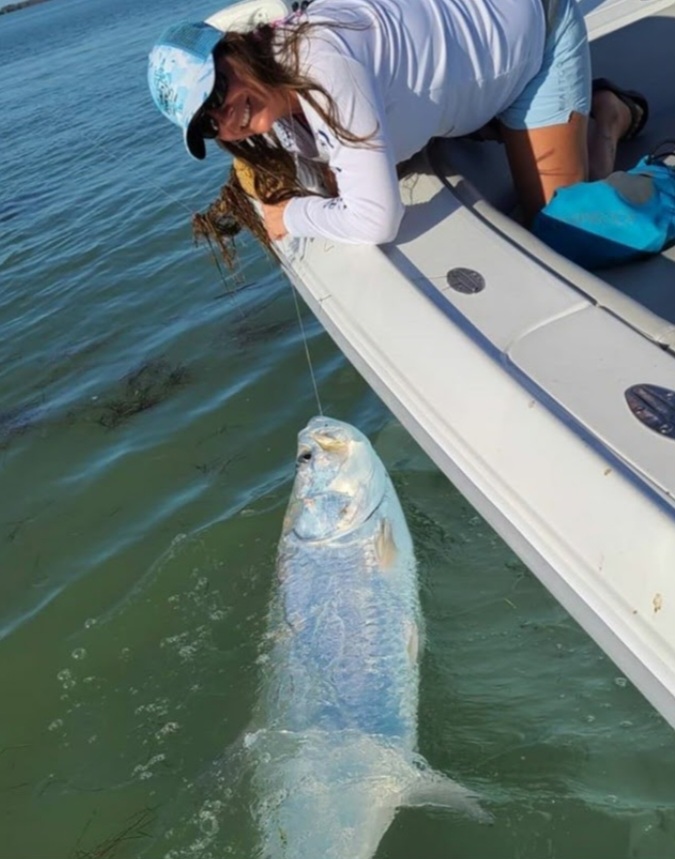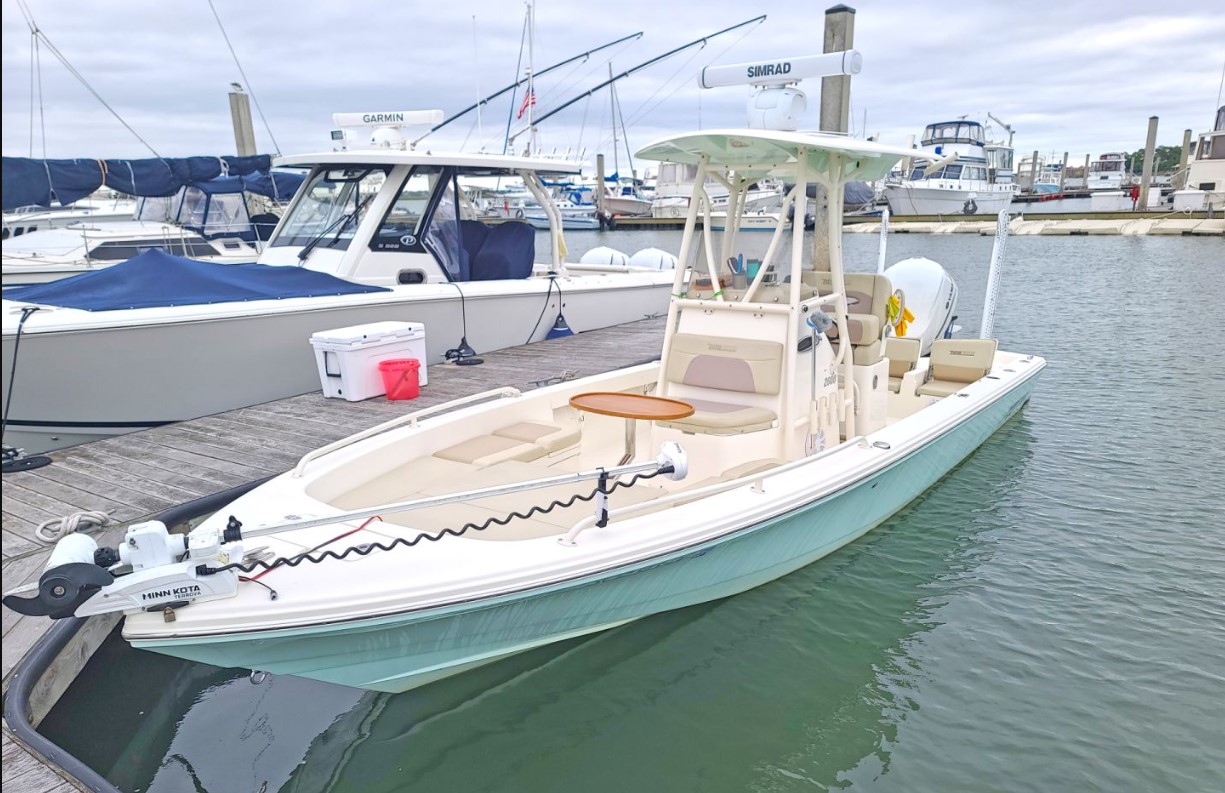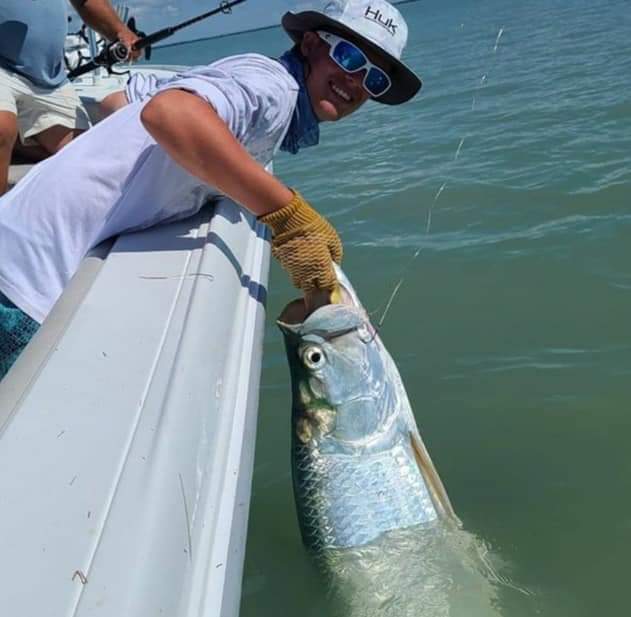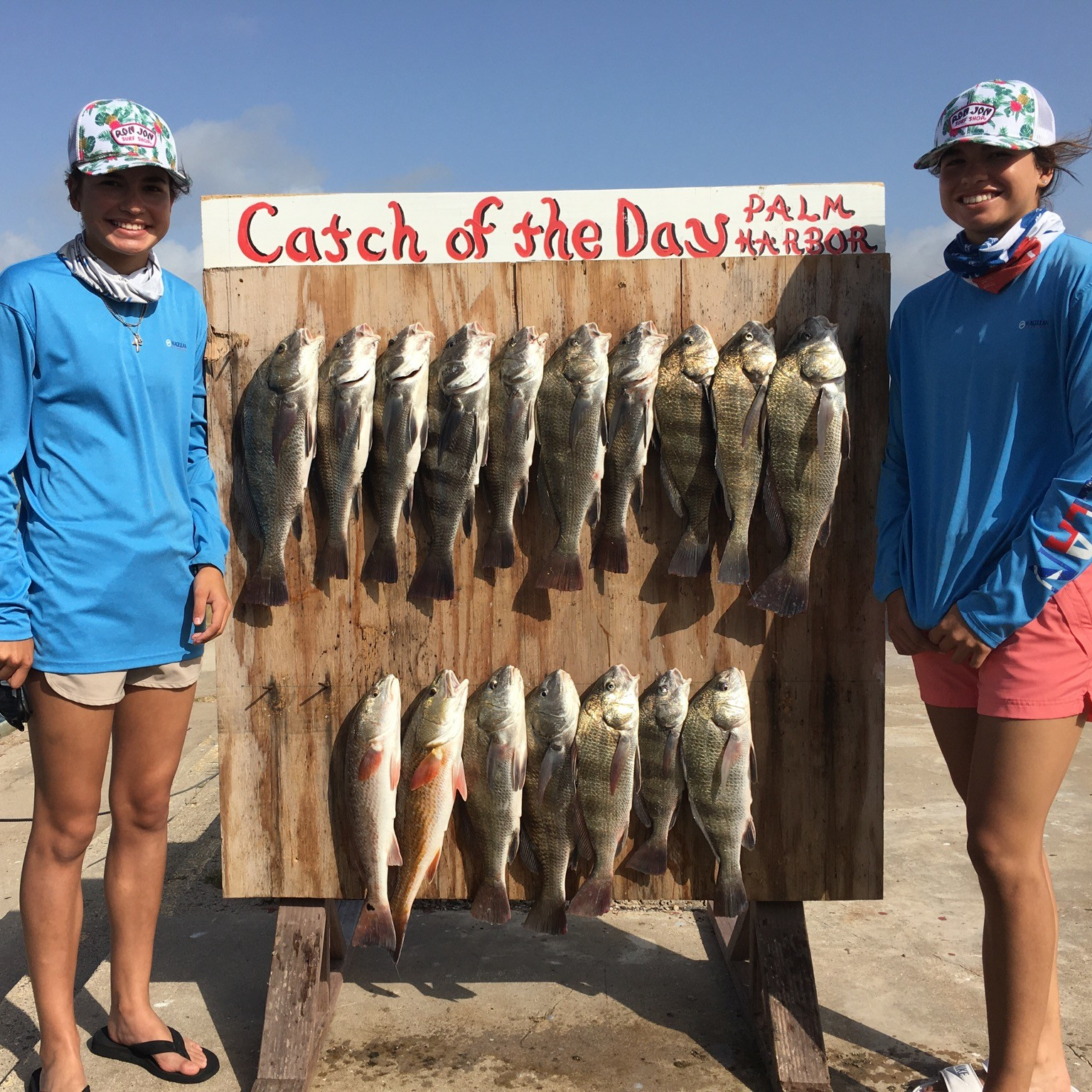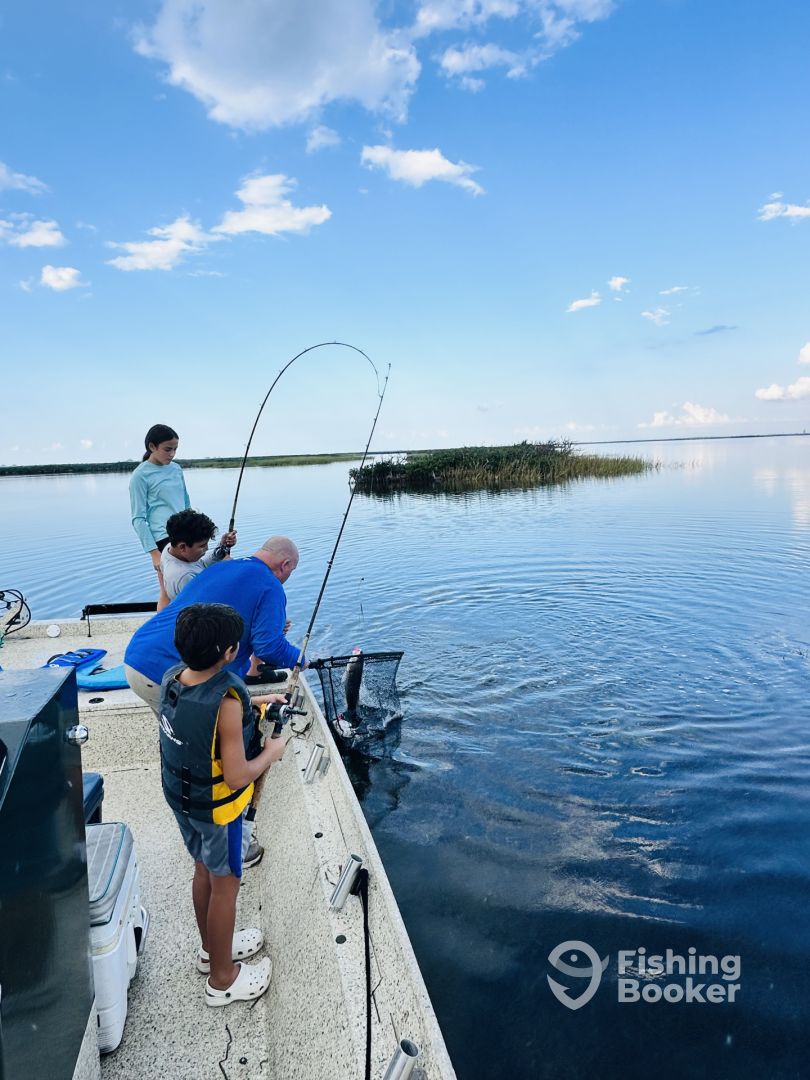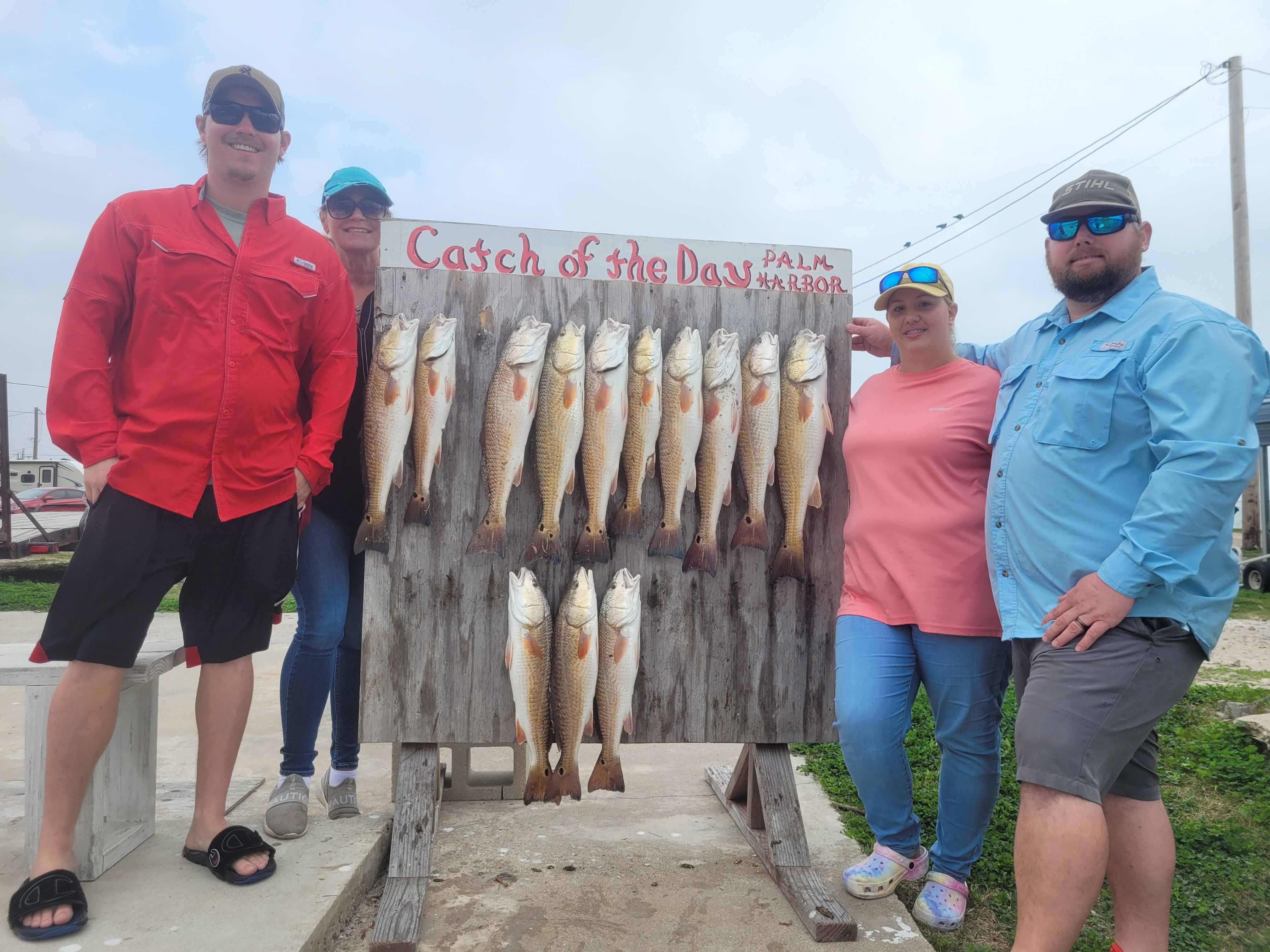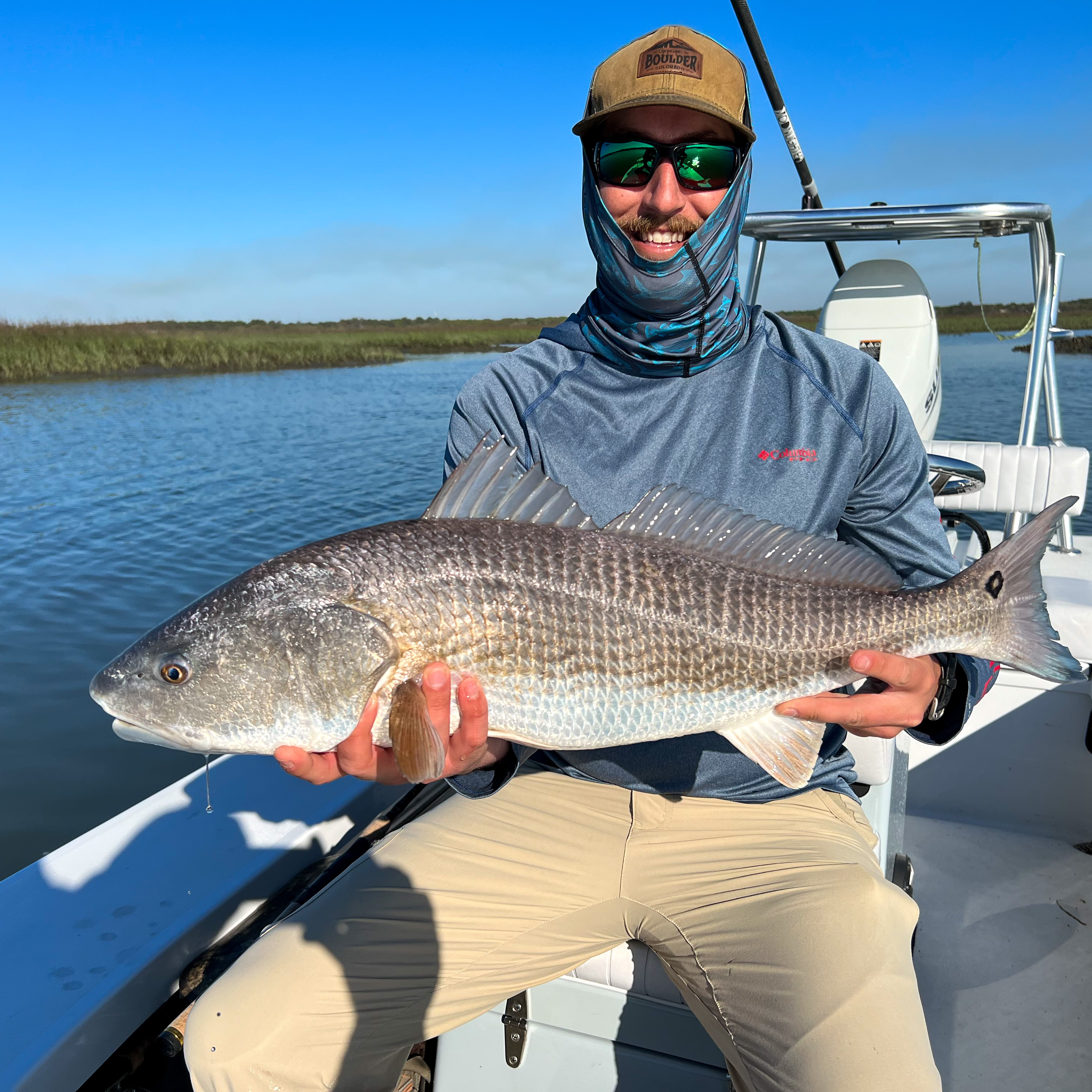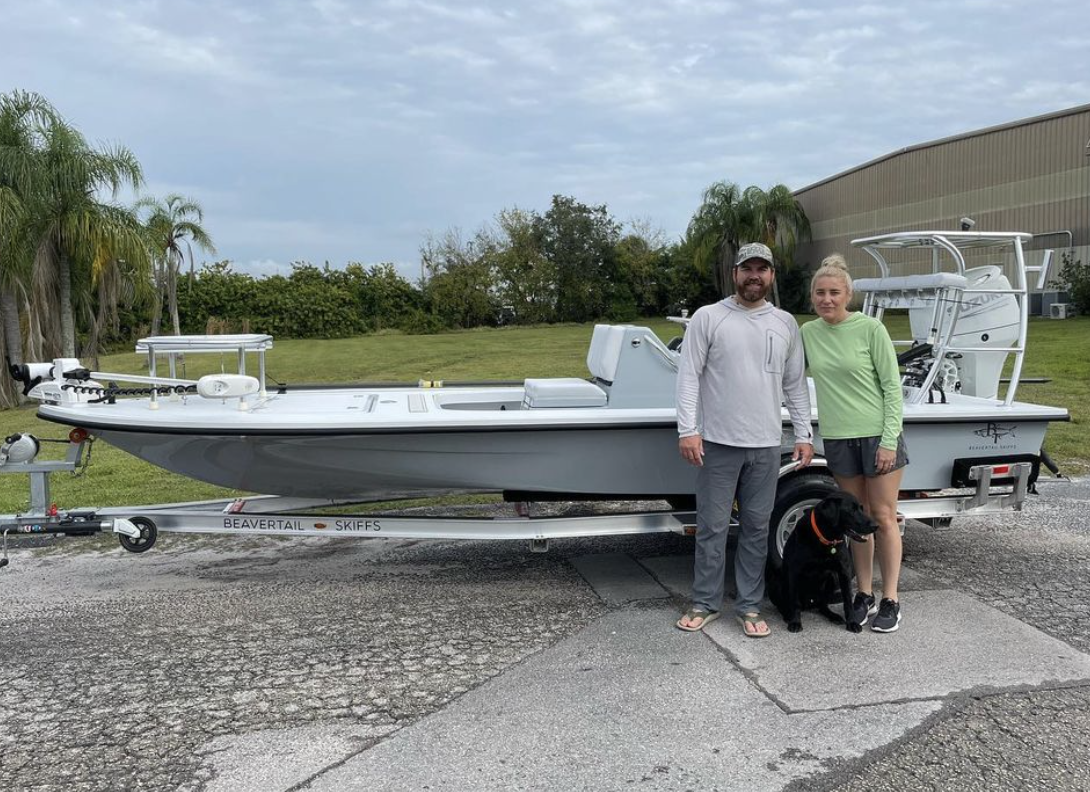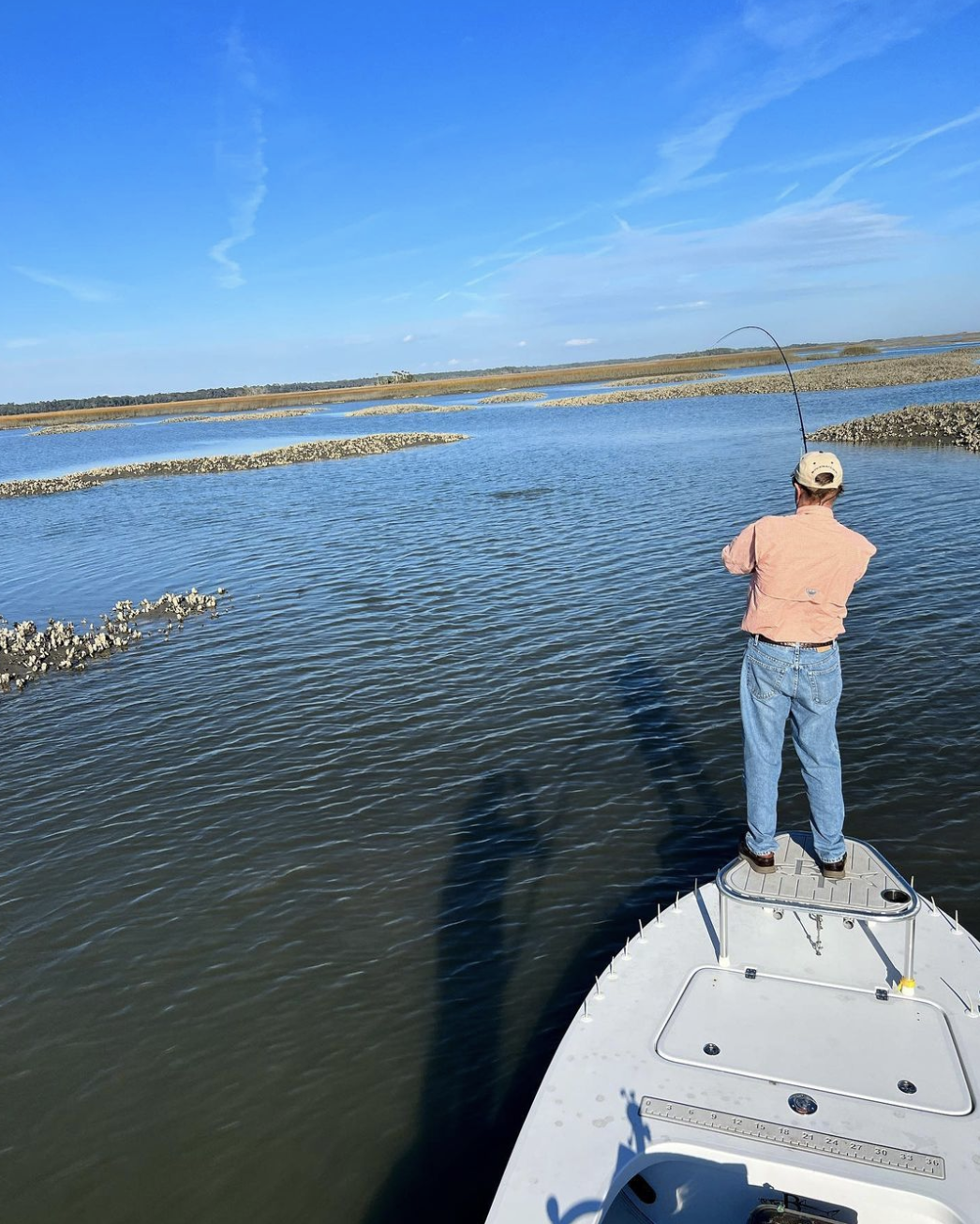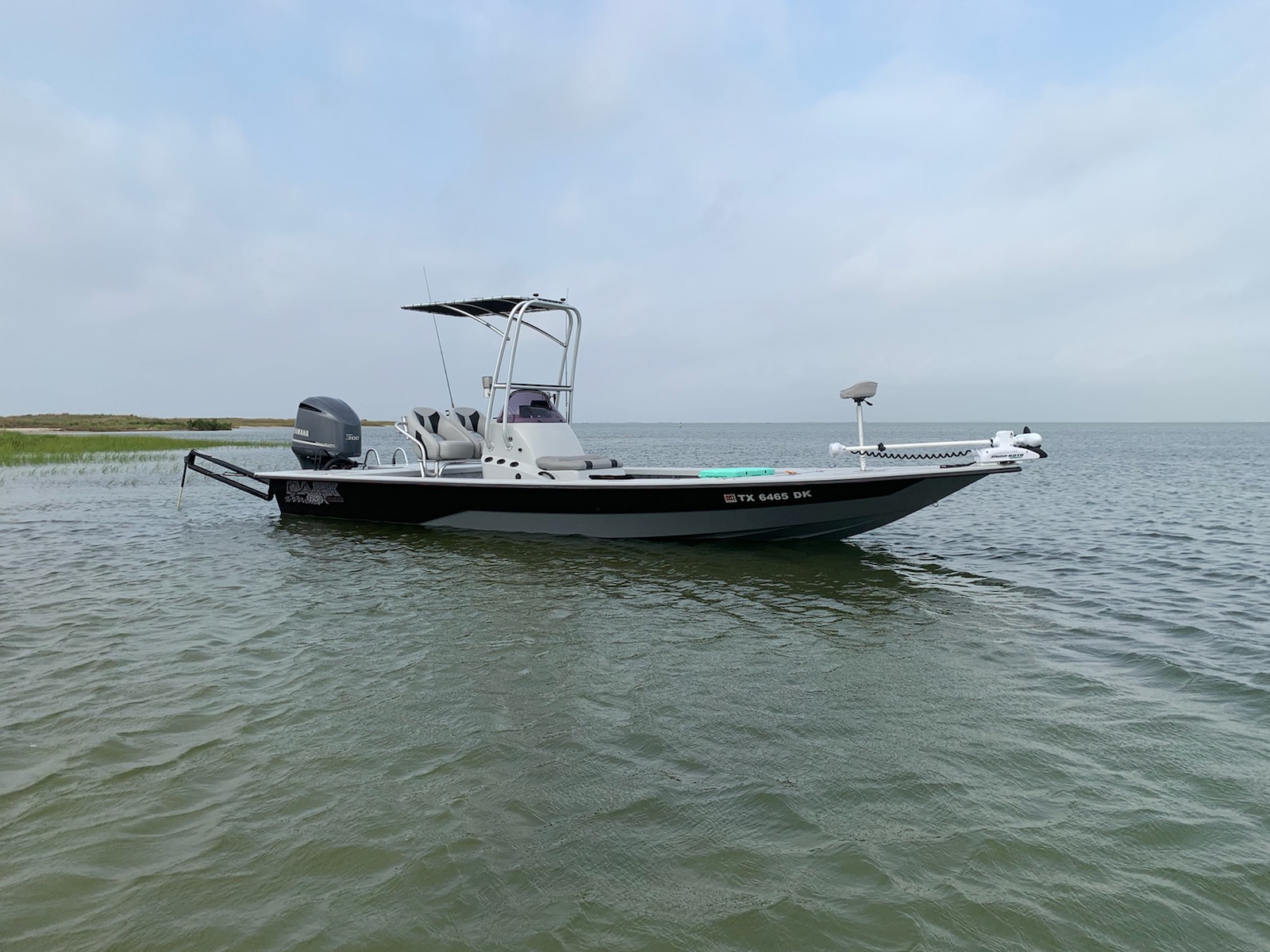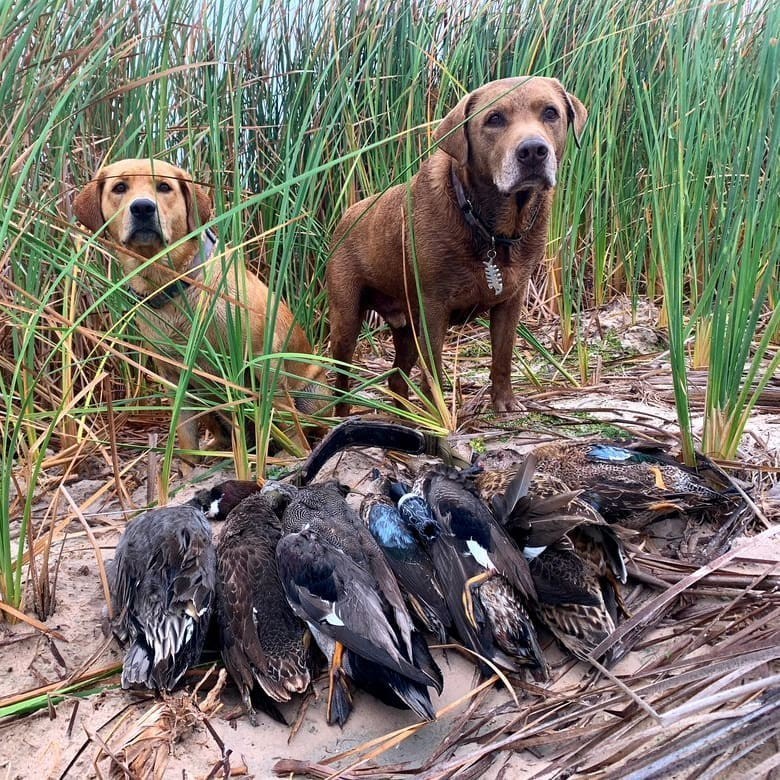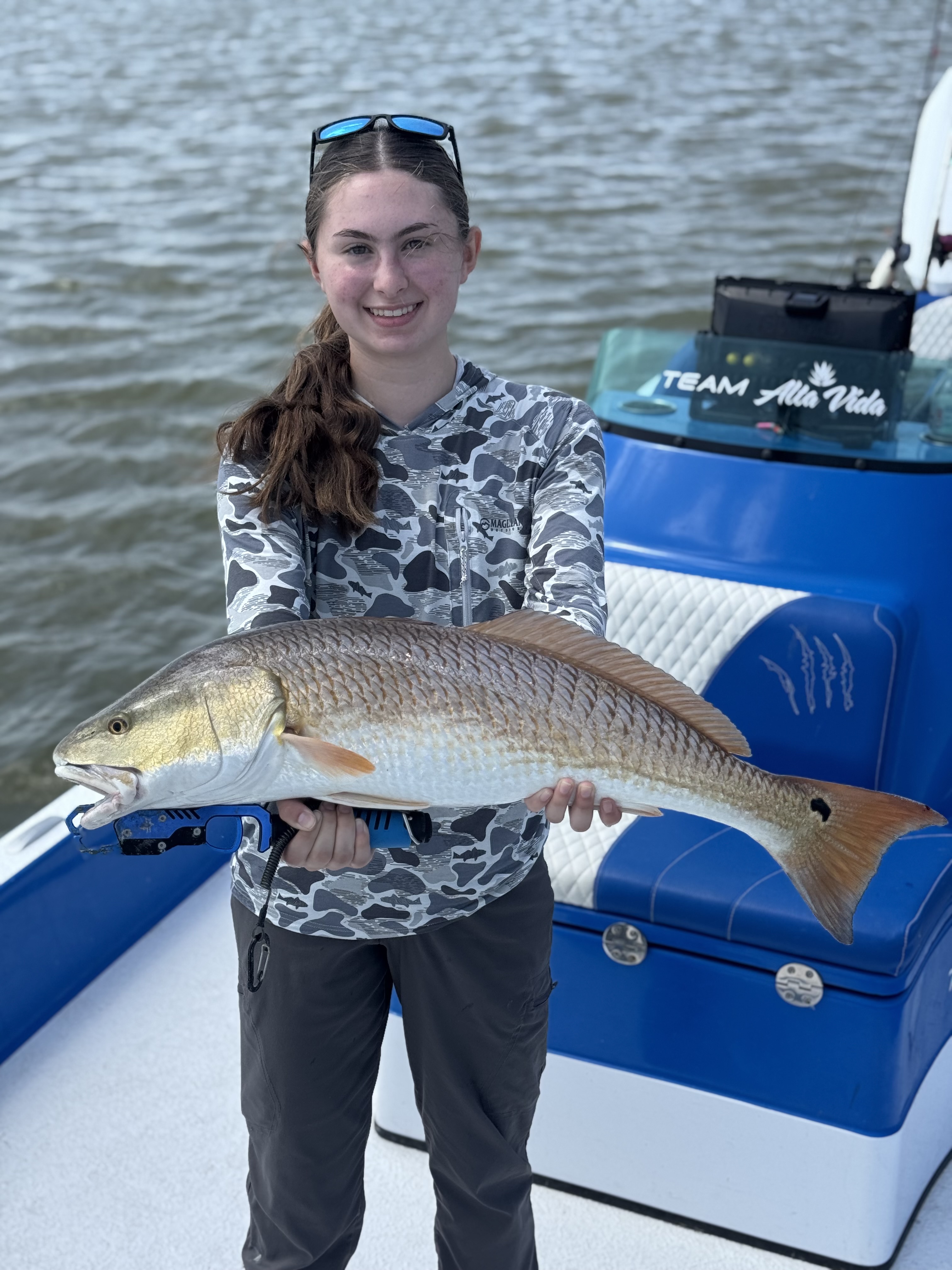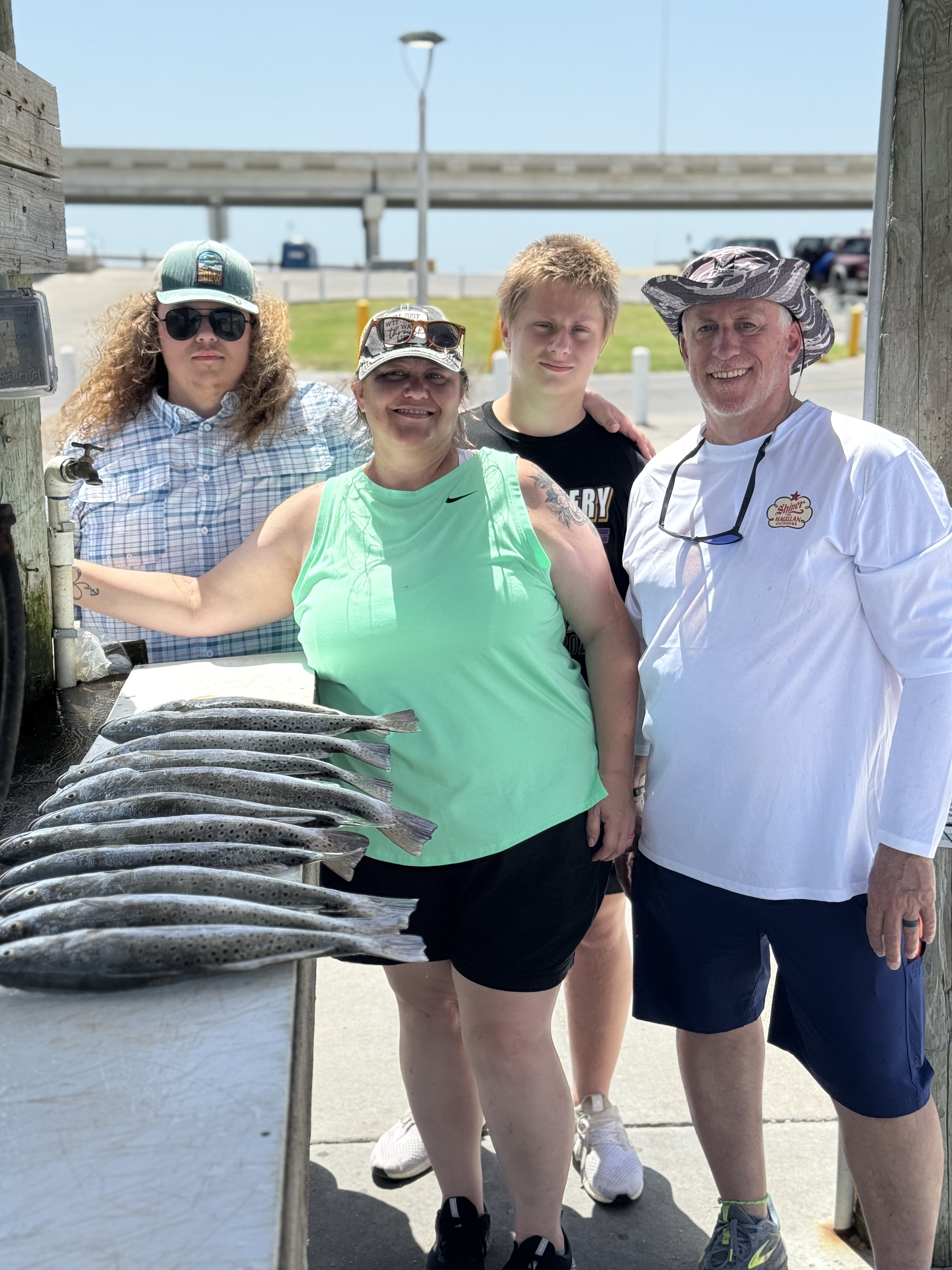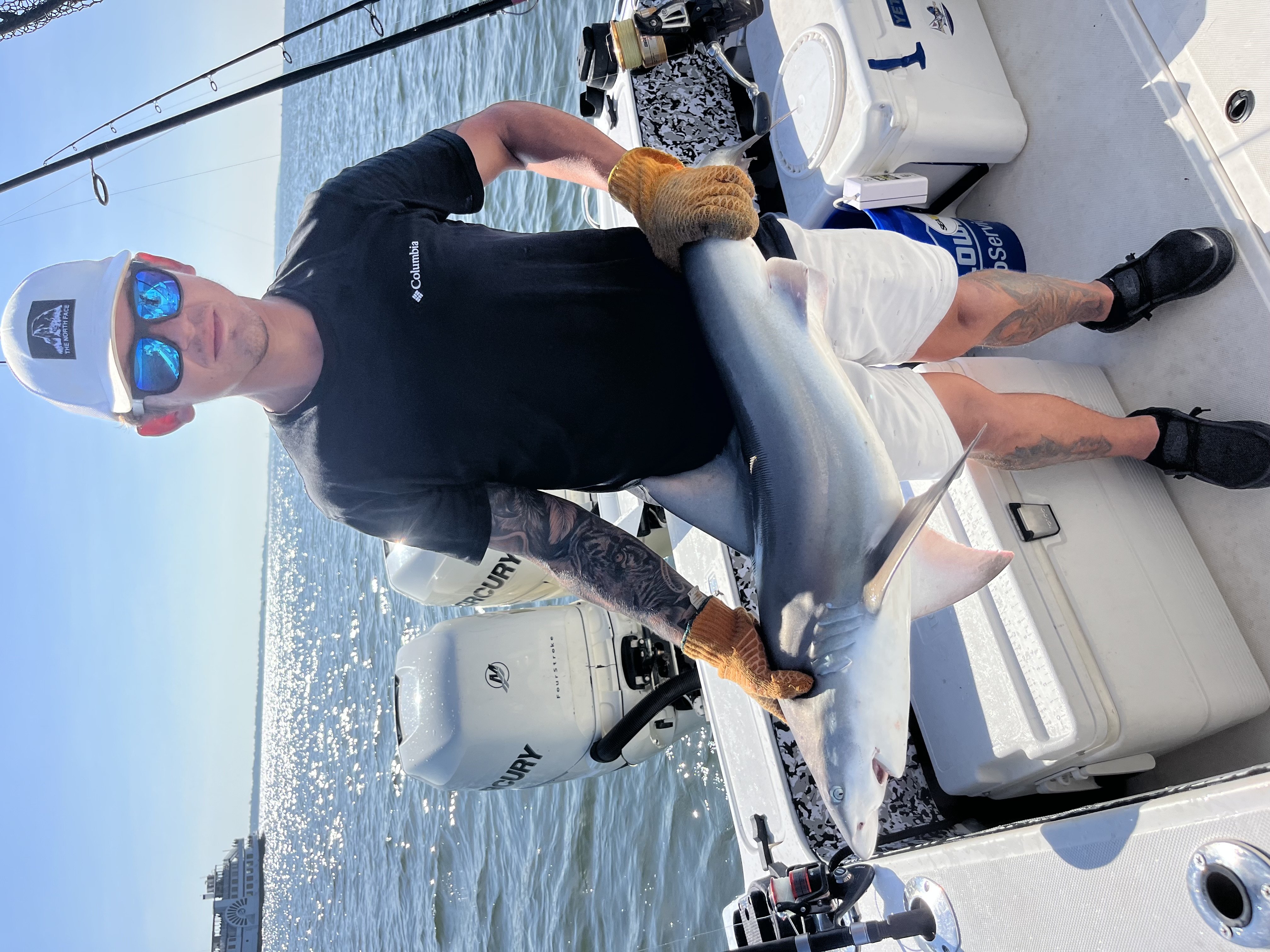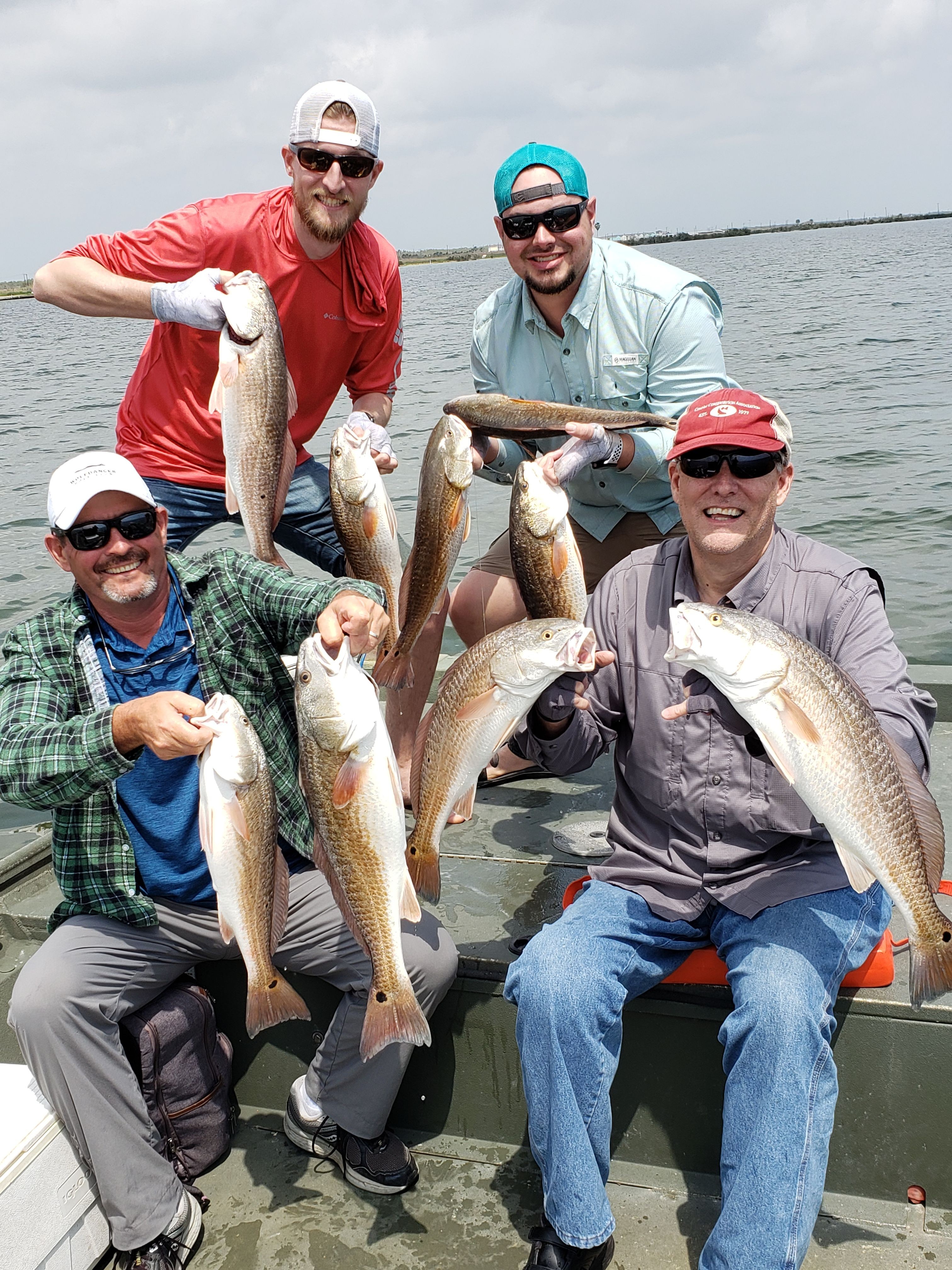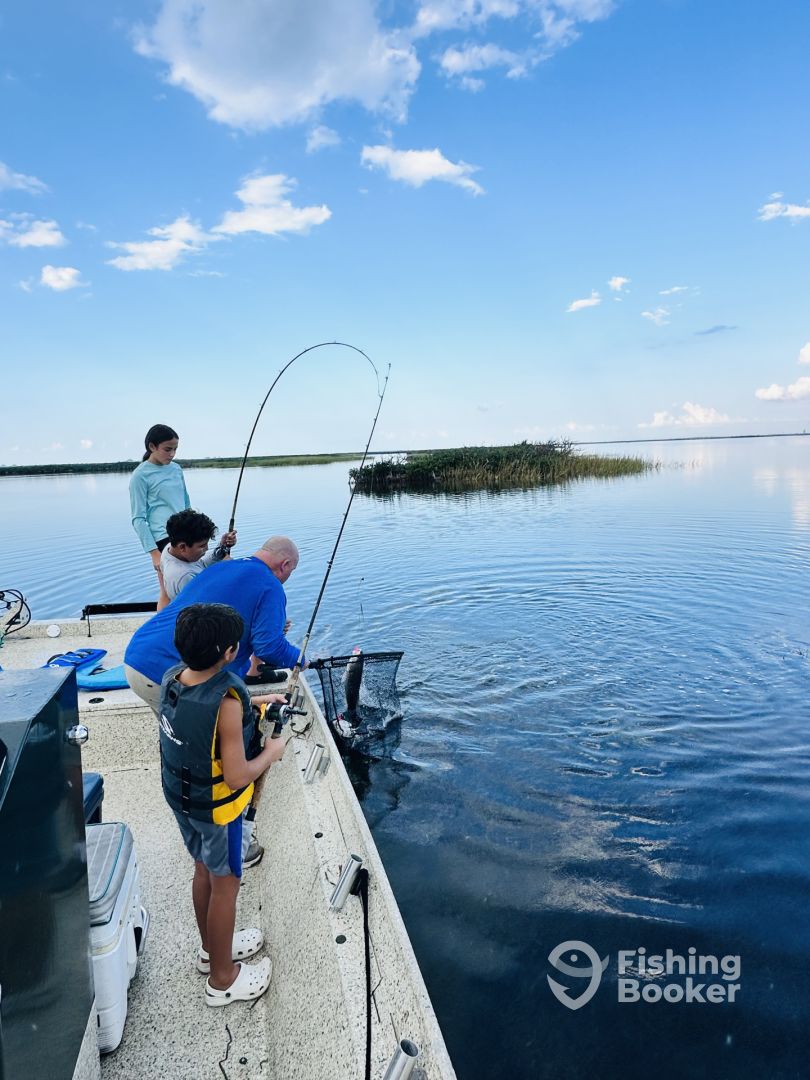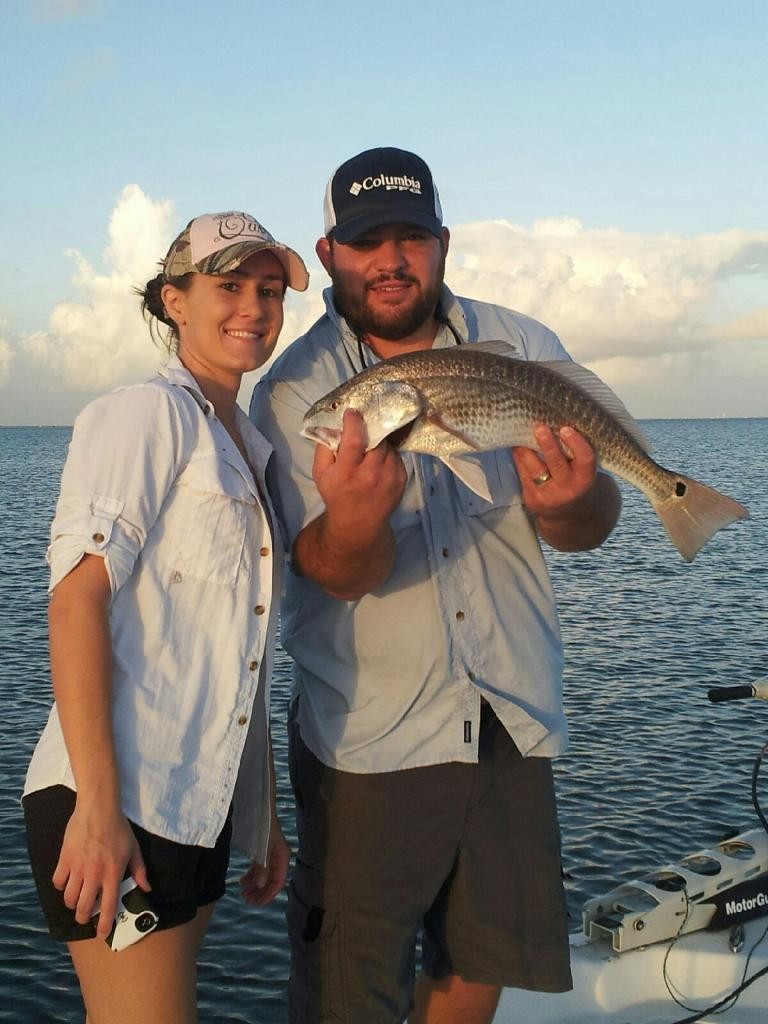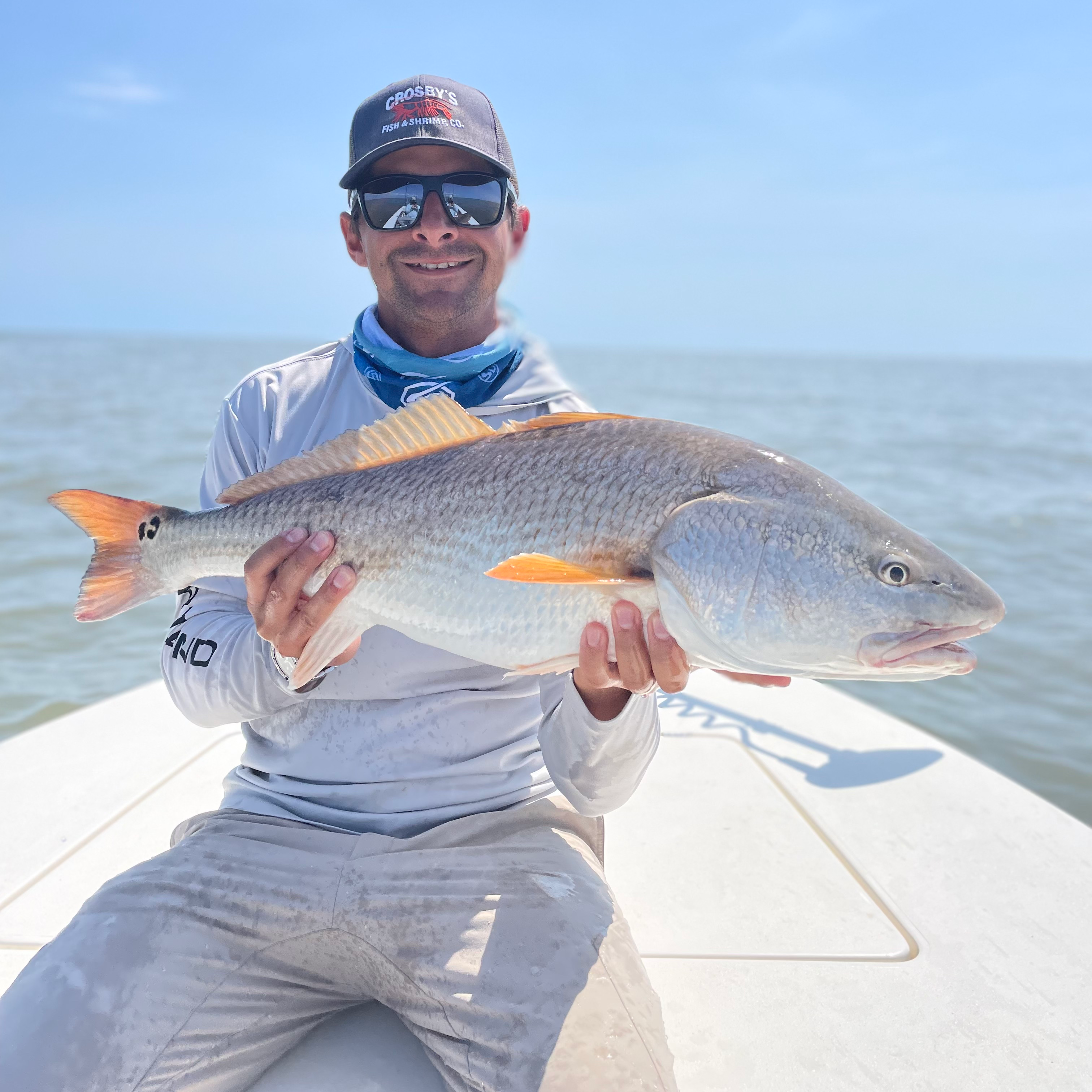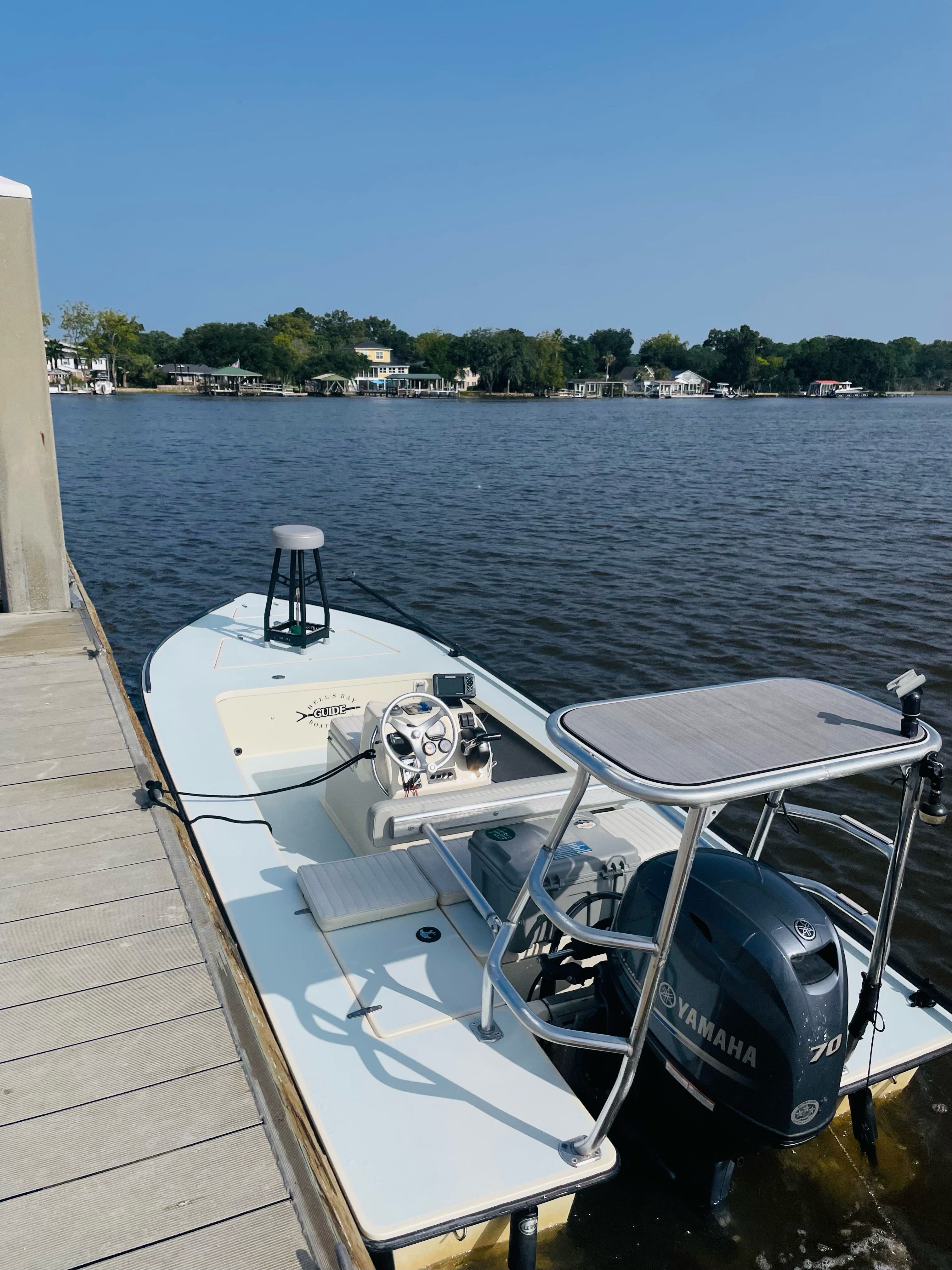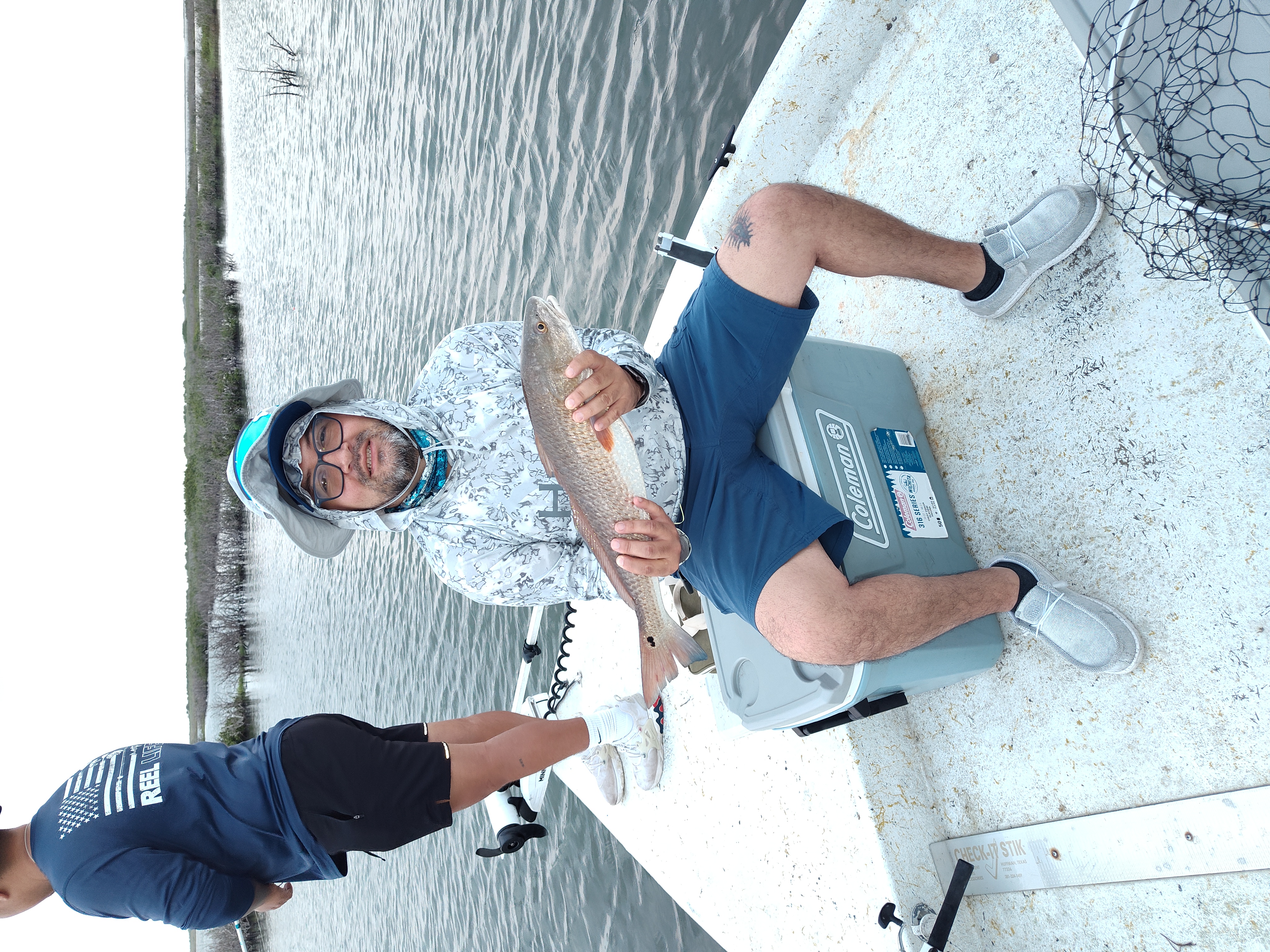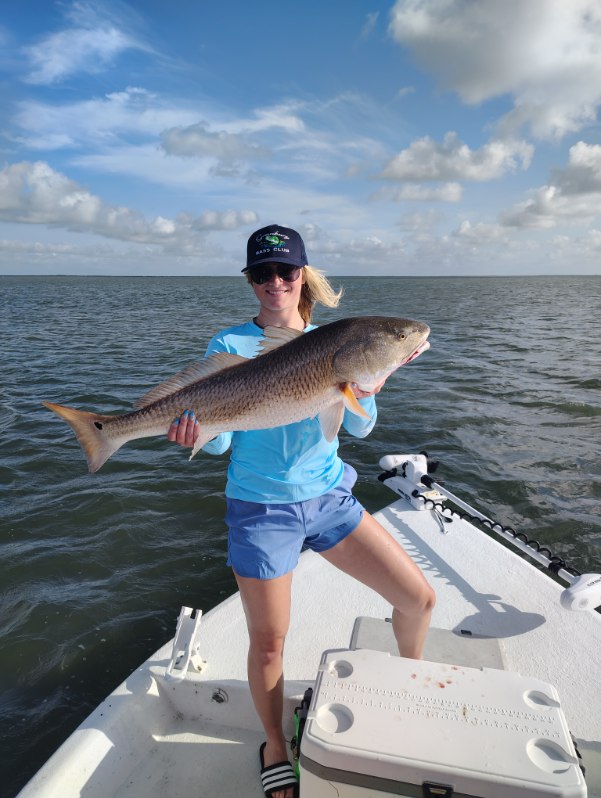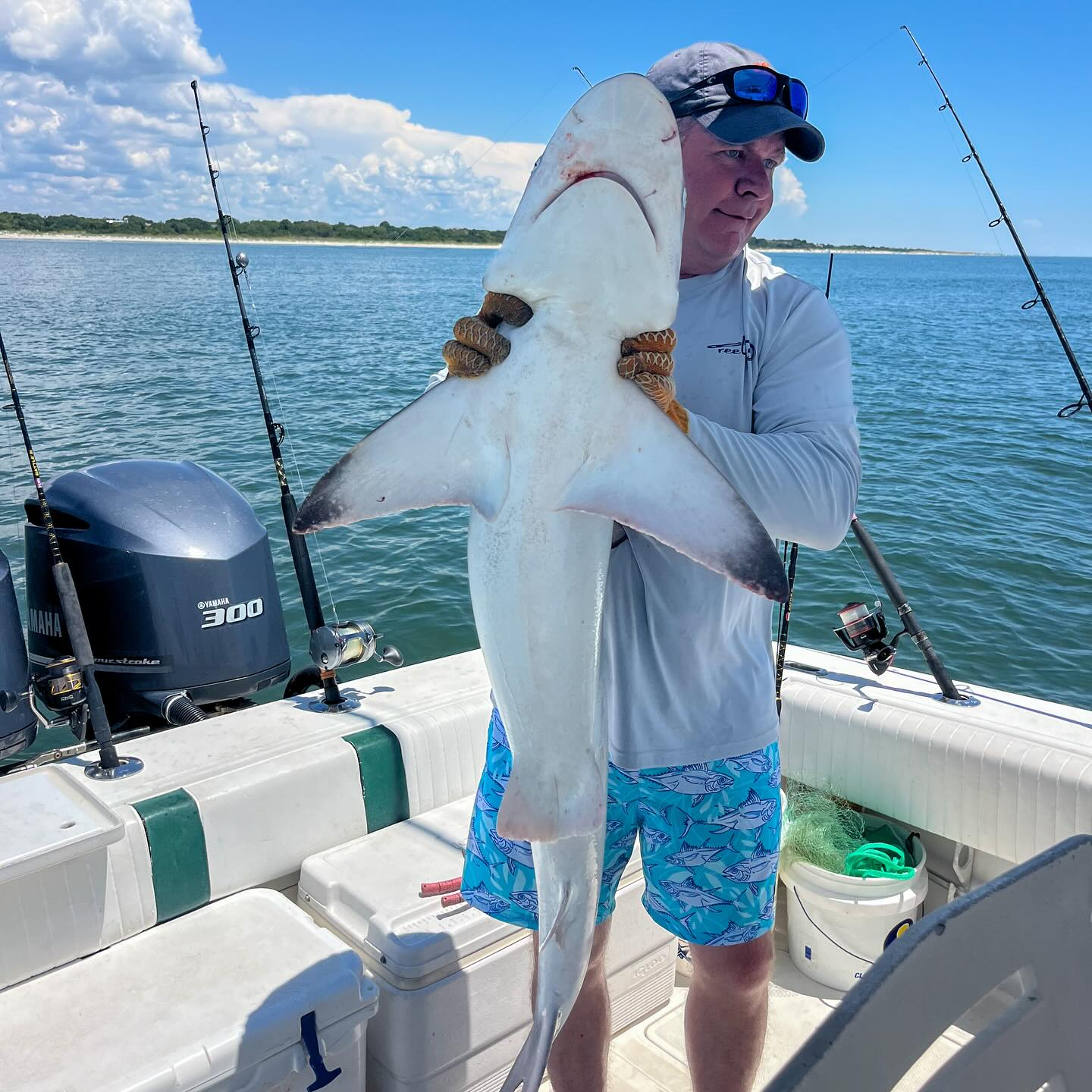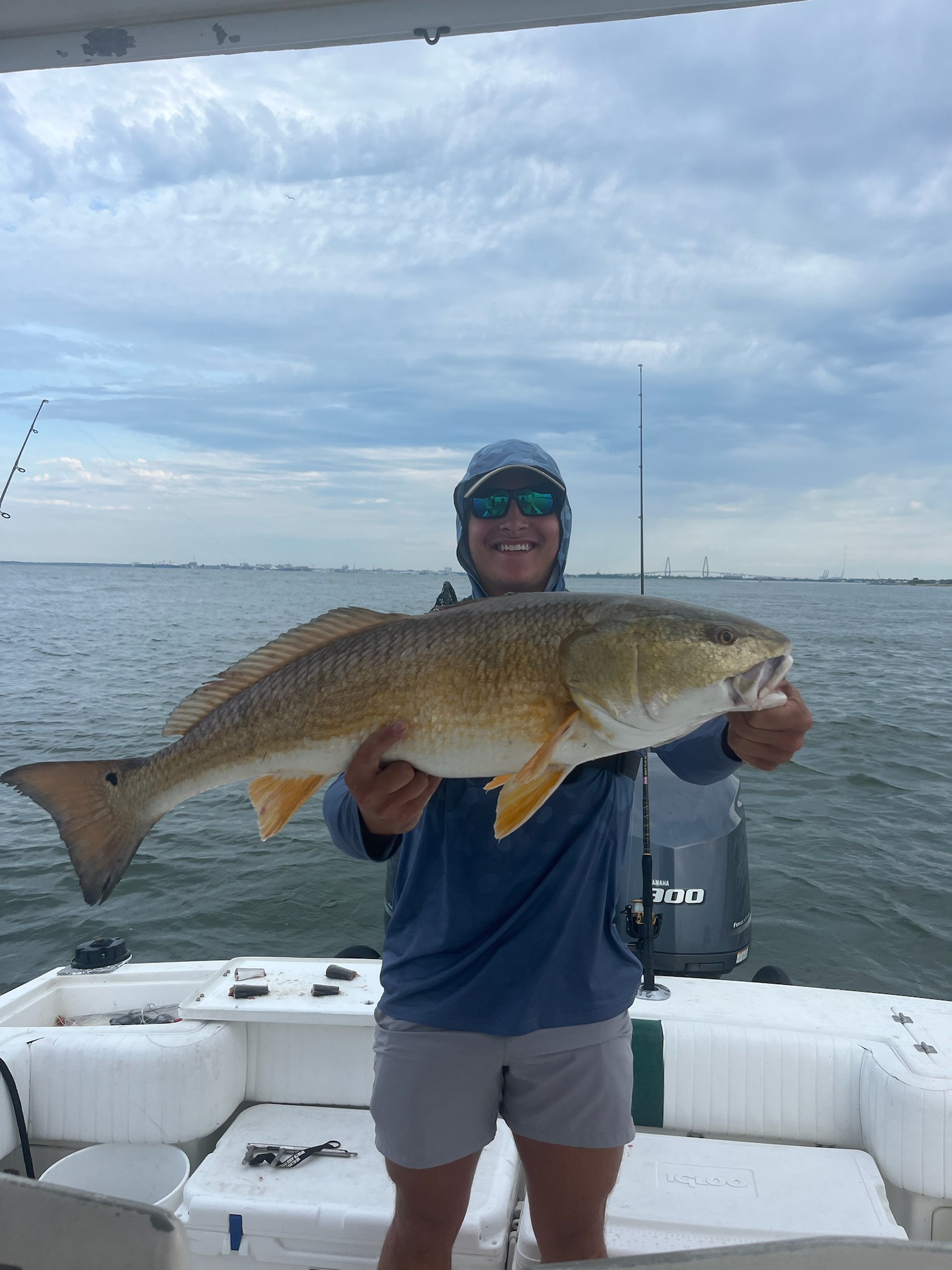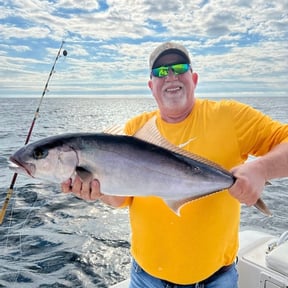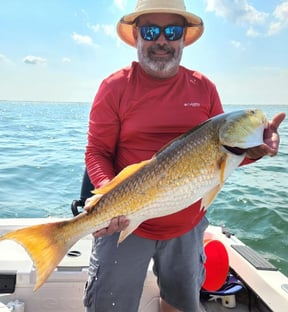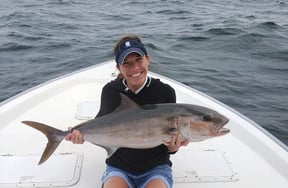Inshore, River, Flats in Folly Beach
3-6 Hr – Inshore Trip
Inshore, Flats Fishing in Rockport
Half Day Rockport Slam
Inshore, River, Flats in Charleston
Reds On The Fly And Light Tackle
Rockport Cast And Blast
Inshore, Flats Fishing in Rockport
Family Friendly Rockport
Inshore, Nearshore, Jetty in Charleston
4 HR Inshore/Harbor/Jetties PM
Inshore, Flats Fishing in Rockport
Rockport Bay Slam
Inshore, River, Flats in Folly Beach
Folly Fly Or Light Tackle
Inshore, Jetty, Flats in Rockport
Rockport Redfishing
Inshore, Nearshore, Jetty in Charleston
6 HR Reef/Nearshore/Jetties/Harbor
We started Captain Experiences to make it easy to book fishing and hunting guides around the world. With over 2,000 Damn Good Guides, our platform makes finding and booking a trip seamless. Head here to check out our trips.
Redfish are an inshore species with more loyal fans than most professional sports teams. These handsome fish get their name from the copper color that dominates their body, which also sports a distinctive black spot or spots near the tail. On some redfish, the spots are so numerous they cover the fish’s body. These “leopard” reds are a trophy in their own right, but for most anglers, it’s all about the experience. While there’s no denying redfish are striking, the appeal of this fish stems from their formidable strength and remarkable size.
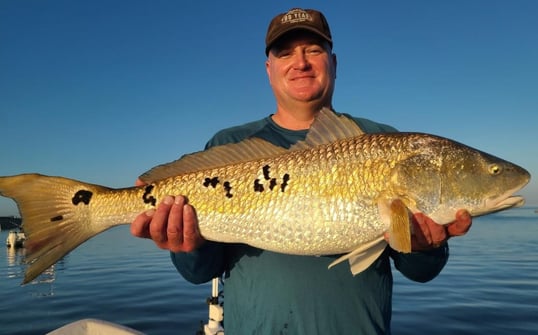
Redfish and Trophy Bull Reds
Redfish are an exhilarating fish to catch with their ability to crush your bait and run off spooling line off the reel even with considerable drag. Redfish get big fast reaching maturity in three to five years at a length of 28 inches. A large redfish is considered to be anything over 30 inches.
Redfish over 30 inches, commonly called bull reds, often leave inshore waters and head to deeper nearshore areas for most of the year. The only time you can count on these giant reds heading back into shallow bays and back waters is to spawn. When fall hits, bull redfish flood into inshore waters to spawn, which anglers refer to as “the running of the bulls.” Bull redfish measuring over 30 and sometimes 40 inches are not uncommon during the fall run, making it the best time to catch that trophy-sized fish. At 40 inches a redfish is in the top of its class and for anglers, it’s the fish of a lifetime.
How Hard does a Redfish Fight
Captain Ryan of Folly Beach, SC said, “fighting a 30 inch redfish on light tackle, you will not get a better fight than that.” While a redfish may not jump like a marlin or battle like a bluefin, for their size, they put up a bullish fight that is every bit as stout. Landing a redfish is a rewarding experience on its own, but their appeal extends beyond the water as they’re also delicious table fare.

Gulf of Mexico Redfish Season and Management
Red drum doesn’t have an open season in the federal waters of the Gulf of Mexico and the harvest of redfish is strictly prohibited. In state waters, redfish have no closed season and can be harvested year-round within the bag limits set by each state. The best time of year to catch redfish in the gulf is generally late summer into the fall but will vary depending on your specific location.
In the 1970s and 80s’ red drum were commercially harvested and were not a protected game fish which ultimately led to overfishing resulting in smaller and fewer fish. With the elimination of commercial fishing and the addition of strict bag limits redfish have been able to recover. Red drum regulations are set by the states. The exact regulations vary from state to state but minimum and maximum size restrictions(slot limits), as well as daily bag limits, are present in every state where redfish are found.
The Best Time to Catch Redfish
When asked the best time to target redfish, the answer is either (a) anytime you can or (b) in the fall. The experts know both answers are true but understanding why is just as important. Redfish are found throughout the Gulf of Mexico and along the Atlantic Coast, but year-round populations are usually confined to the waters south of Virginia. From Texas to North Carolina, shielded warm waters and abundant food sources allow redfish to stay put, and anglers to target them anytime. Captain Alan of Rockport, TX explained it best saying, “these fish live here year round and have to eat, but the biggest reds show up in the fall to spawn.”
The Top Spots to Catch Redfish
In conversations with guides about the top redfish destinations, four states consistently came up. Across the board, Texas, Louisiana, Florida, and South Carolina were mentioned as exceptional places to fish for quality redfish. This also speaks to the adaptability of redfish as each of these areas have distinctly different environments.
Warm protected waters along the Texas Coast, from Rockport to Baffin Bay, create an incredible fishery and a special place to catch redfish. The Mississippi River supports an incredible amount of bait in the Louisiana marsh, especially near Venice and Grand Isle, and is likely responsible for the abundance of exceptionally large bull reds that are caught here every year.
Florida’s gin-clear water and grassy flats are the perfect environment for redfish to flourish, with Mosquito Lagoon often being mentioned by name. The intricate backwater creeks, combined with the oyster bars and grass flats near Charleston, South Carolina also create a diverse fishery that’s teeming with redfish 365 days a year.
Tactics for Targeting Redfish
The techniques anglers use to target redfish vary with different environments, weather conditions, and personal preferences. The three most common fishing styles are drifting, wading, and sight fishing. Each approach has pros and cons, but all three are effective if done correctly. The effectiveness of various bait and tackle options, on the other hand, differ much more.
How to use Cut Bait and Live Bait for Redfish
Regardless of where you are or what you’re fishing for, the obvious goal is to get a bite. Using common redfish food sources as bait are reliable options. The most commonly consumed prey of redfish include shrimp, crab, and various baitfish. The type of bait available will change seasonally and differ from location to location. Asking other anglers or employees at the local bait shops can unveil valuable insights. However, the fastest way to shorten the learning curve is to hire a guide. The most popular and effective ways to fish with bait are popping corks for fish near the surface and a Carolina or Texas Rig for bottom fishing.
Captain Ryan emphasized that the old advice of using long leaders on bottom fishing rigs often results in gut hooking fish, which in many cases results in death. Ryan recommends using “a circle hook with a six to eight inch leader,” which reduces the chance of a gut hook and causes your bait to “shake and be more violent on the hook.” The shorter leader has two benefits – 1) it’s sensitive and allows anglers to feel a bite before the fish swallows the hook and 2) it forces the bait to stay closer to the bottom where it causes more disturbance.
Joey Butrus
Updated on June 20, 2023

August 21, 2023

June 28, 2023
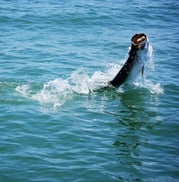
April 15, 2022

June 22, 2022
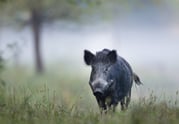
November 7, 2023
Related Articles
September 26, 2022
September 29, 2022
December 6, 2021
Featured Locations
- Fishing Charters Near Me
- Austin Fishing Guides
- Biloxi Fishing Charters
- Bradenton Fishing Charters
- Cabo San Lucas Fishing Charters
- Cancun Fishing Charters
- Cape Coral Fishing Charters
- Charleston Fishing Charters
- Clearwater Fishing Charters
- Corpus Christi Fishing Charters
- Crystal River Fishing Charters
- Dauphin Island Fishing Charters
- Daytona Beach Fishing Charters
- Destin Fishing Charters
- Fort Lauderdale Fishing Charters
- Fort Myers Fishing Charters
- Fort Walton Beach Fishing Charters
- Galveston Fishing Charters
- Gulf Shores Fishing Charters
- Hatteras Fishing Charters
- Hilton Head Fishing Charters
- Islamorada Fishing Charters
- Jacksonville Fishing Charters
- Jupiter Fishing Charters
- Key Largo Fishing Charters
- Key West Fishing Charters
- Kona Fishing Charters
- Lakeside Marblehead Fishing Charters
- Marathon Fishing Charters
- Marco Island Fishing Charters
- Miami Fishing Charters
- Montauk Fishing Charters
- Morehead City Fishing Charters
- Naples Fishing Charters
- New Orleans Fishing Charters
- New Smyrna Beach Fishing Charters
- Ocean City Fishing Charters
- Orange Beach Fishing Charters
- Panama City Beach Fishing Charters
- Pensacola Fishing Charters
- Pompano Beach Fishing Charters
- Port Aransas Fishing Charters
- Port Orange Fishing Charters
- Rockport Fishing Charters
- San Diego Fishing Charters
- San Juan Fishing Charters
- Sarasota Fishing Charters
- South Padre Island Fishing Charters
- St. Augustine Fishing Charters
- St. Petersburg Fishing Charters
- Tampa Fishing Charters
- Tarpon Springs Fishing Charters
- Venice Fishing Charters
- Virginia Beach Fishing Charters
- West Palm Beach Fishing Charters
- Wilmington Fishing Charters
- Wrightsville Beach Fishing Charters
